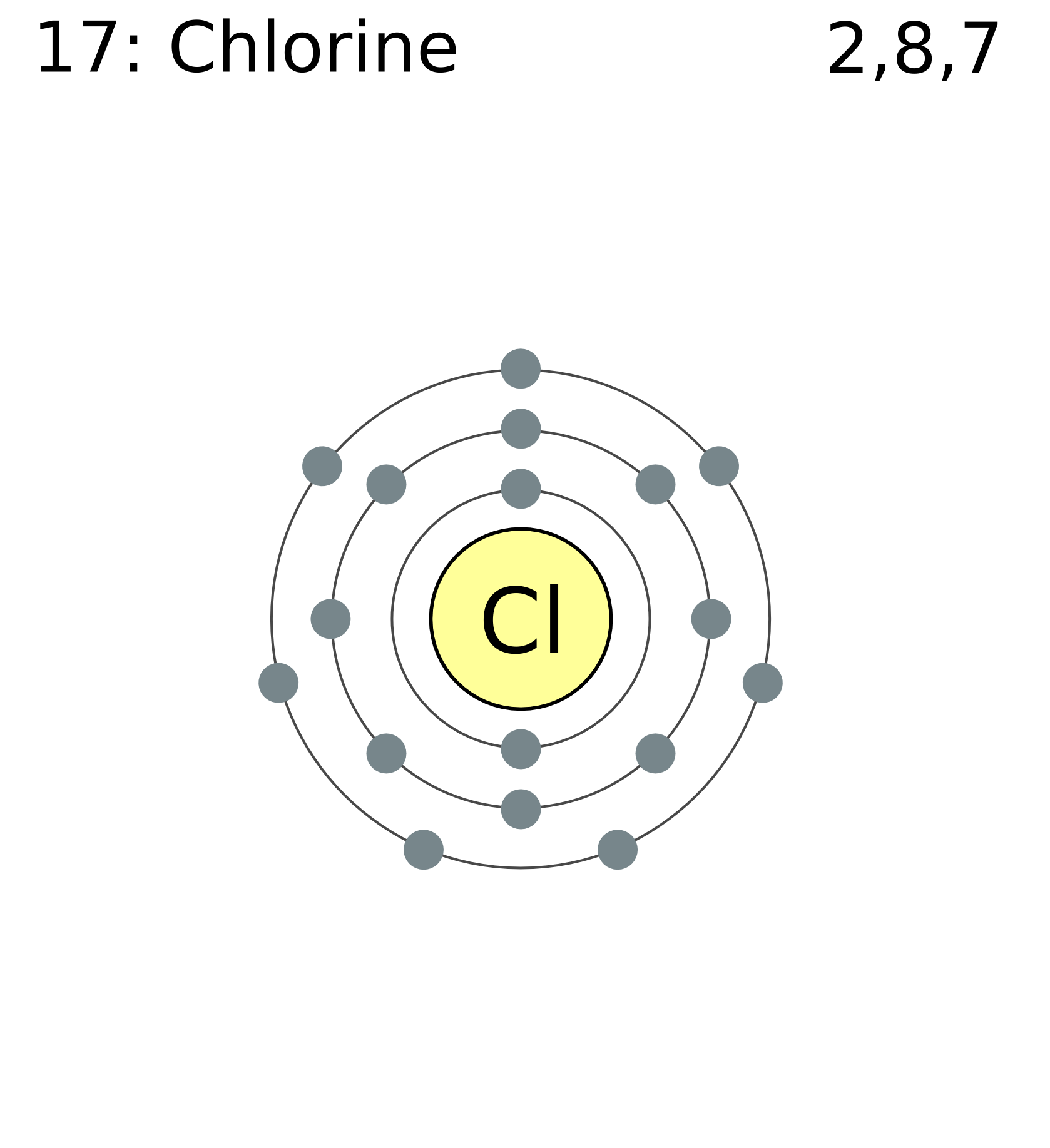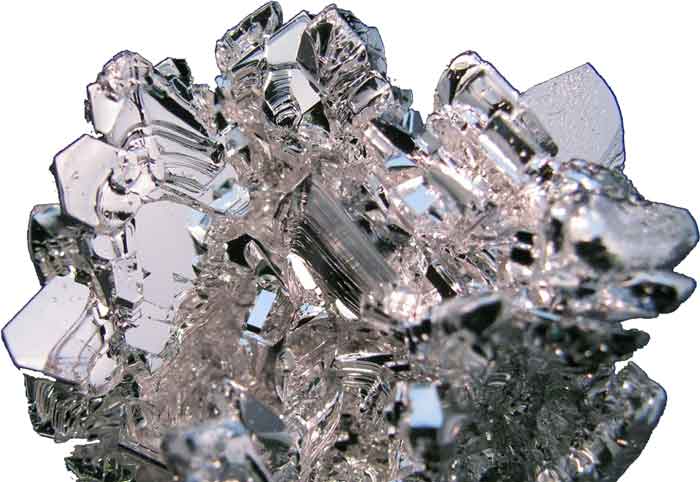- Electrons: Chlorine can be found in the periodic table with an atomic number of 17. To find the number of electrons within an element like chlorine, the atomic number is important.
- 12 INCORRECT Chlorine has an atomic number of 17. How many electrons are in the outermost shell? A) 1 B) 7 C) 8 D) 2 E) 5 Feedback: An atomic number of 17 indicates 17 protons attracting 17 electrons; the first shell holds two, the second shell holds eight, leaving 7 electrons in the outer shell.
- Number Of Electrons In Chlorine 35
- Number Of Electrons In Chlorine Atom
- Number Of Electrons In Chlorine 37
- Number Of Electrons In Chlorine Ion
Chlorine is an element with unique properties

- Elemental chlorine gas (Cl2) is a yellow-green gas at room temperature and has a pungent odor similar to bleach even at very low concentrations.
- Chlorine has an atomic number of 17 and an atomic mass of 35.45, meaning that an atom of chlorine consists of 17 protons, 17 electrons, and 18 neutrons.
- As a member of the halogen family on the Periodic Table, chlorine is very reactive with metals and forms salts. This is because halogens have seven outer ring electrons (“valence electrons”) but need eight to form a stable configuration. Metals will ionically bond with chlorine and yield an electron to halogens, forming a stable “octet.”
- The chloride ion (Cl–) forms a covalent bond with itself to form Cl2 gas in its pure form.
- Chlorine’s boiling point is -35⁰C (-31⁰F), and its melting point is -101⁰C (-149.8⁰F). The density of chlorine is 13.0 lb/gal, making it denser than air. The high density of chlorine gas causes it to sink if released into the ambient environment.
Prevalent on our planet and beyond

- Chlorine is the 19th most common element in the earth’s crust, at a prevalence of 1.45 x 102 milligrams per kilogram.
- In the ocean, chlorine is the third most common element, at a prevalence of 1.94 x 104 milligrams per kilogram of water.
- Overall, chlorine is the 23rd most prevalent element in the universe.
- In nature, chlorine is found combined with other elements, such as in salt compounds, carnallite, and sylvite. Some volcanoes emit elemental chlorine gas (Cl2).
- Elemental chlorine gas (Cl2) is manufactured using the chlor-alkali process, which uses electrolysis to transform highly concentrated salt water (brine) into chlorine, sodium hydroxide, and hydrogen.
- Commercial sources of chlorine utilize seawater, various brines, and ocean-derived mineral deposits of salts known as “evaporite minerals.”
Combines easily to form these very well-known compounds, among many others
This means, that the number of electrons present in an chlorine atom is 17. The electronic configuration of chlorine atom is:-E.C - K L M 2 8 7 Where k, l,m are the shells/orbits/ energy levels of an chlorine atom. Valence electrons are the number of electrons present in the outermost shell of an atom. Now, the last shell of chlorine atom has. Chemistry Blog:Many Valence Electrons Does Chlorine Have? Nu.
Number Of Electrons In Chlorine 35
- Sodium chloride (NaCl)—Known widely as common table salt, sodium chloride is an important component of the diets of both people and animals. Sodium chloride is the primary feedstock of chlorine for the chemical industry.
- Hydrochloric acid (HCl)—A strong acid, hydrochloric acid is extremely useful for titration, reacting with unknown bases to determine their composition. Hydrochloric acid also has many uses including processing steel and food products like gelatin and sugar, and producing batteries. In humans, it is produced in our stomachs to help digest food.
- Polyvinyl chloride (PVC)—Most PVC compounds are made using sodium chloride. They are extremely useful thermoplastics that can replace rubber or metal pipes. Additionally, they are very lightweight and are also used for many purposes in the healthcare industry, such as tubing.
- Magnesium chloride (MgCl2)—Found in seawater and serves as a natural source of metal magnesium. Magnesium is not only used to create alloys for manufacturing processes, but it is also the fourth most prevalent element in the human body and essential for nutrition.
Number Of Electrons In Chlorine Atom
Discover all the products made possible by chlorine chemistry through our chlorine and sodium hydroxide product trees.
A workhorse element with a wide range of important applications
Number Of Electrons In Chlorine 37
Below are some of the primary uses of chlorine chemistry:
Number Of Electrons In Chlorine Ion
- Swimming pool water—Kills germs in pool water to help control the spread of waterborne illnesses.
- Drinking water—A major part of the water treatment process, chlorine-based disinfectants have residual disinfection activity that prevents the regrowth of pathogens in the water distribution system.
- Disinfection—Bleach solutions are used extensively in restaurants, schools, hospitals, homes, and other settings to disinfect surfaces, destroying pathogens, including norovirus, hepatitis A, Ebola, influenza, and many more.
- Food safety—Sanitizes food contact surfaces, and dilute chlorine bleach solutions are sometimes sprayed on fresh produce to reduce spoilage and the potential growth of pathogens.
- Crop production—Used to manufacture 89% of the 100 top-selling crop protectants sold in North America.
- Healthcare—Used to manufacture 88% of the top-selling pharmaceuticals sold in North America, and is essential to the manufacture of many types of medical products, such as blood bags, tubing, and titanium alloy implants and prostheses.
- Manufacturing—Used in the manufacturing process of a bevy of industrial compounds and products, including titanium dioxide, environmentally preferred refrigerants, ultra-pure silicon, manufacturing of ethylene and propylene oxides, glycols, synthetic glycerin, tetraethyl lead, phosgene, and more.
- Paper—Used as an oxidizing and bleaching agent in the pulp and paper industry.
